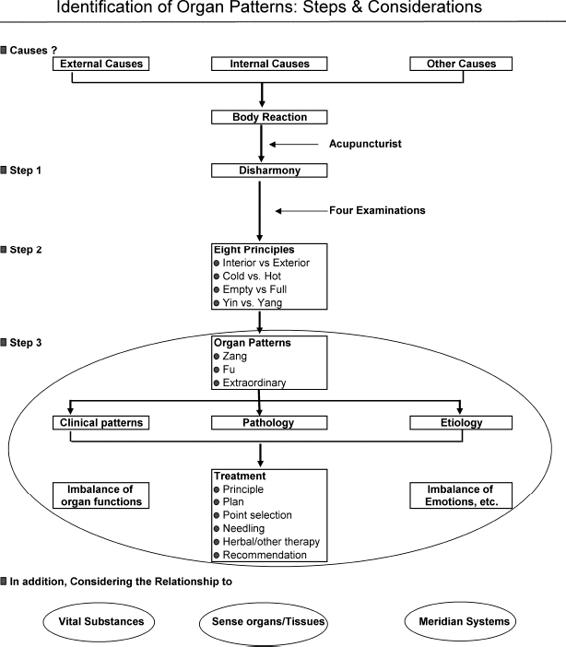Zang Xiang theory and its relationship to pattern identification by internal organ systems
The internal organs, according to their functional type, are divided into three categories: Zang–Fu, and Extraordinary (curious) organs.
Each of Zang or Fu organs has a set of physiological functions.
- Functional relationships, especially among Zang Organs, are essential in diagnosis, assessment, and determining prognosis in practice.
- Clinical manifestations including symptoms (patient complaints) and signs (the doctor’s findings) will show up when functional or structural changes of the internal organ(s) occur. For instance, cough may be present when Lung-Qi becomes rebellious, palpitations may happen when Heart function is impaired, and irritability may occur when Liver-Qi is stagnated.
- By identifying the key clinical manifestations in relation to each organ, and the underlying causes and pathogenesis, one can determine the patterns of internal organs.
- Because of the interrelationships among the internal organs, one can also predict the prognosis of an internal organ syndrome.
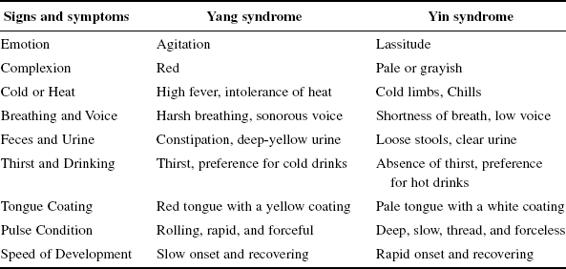
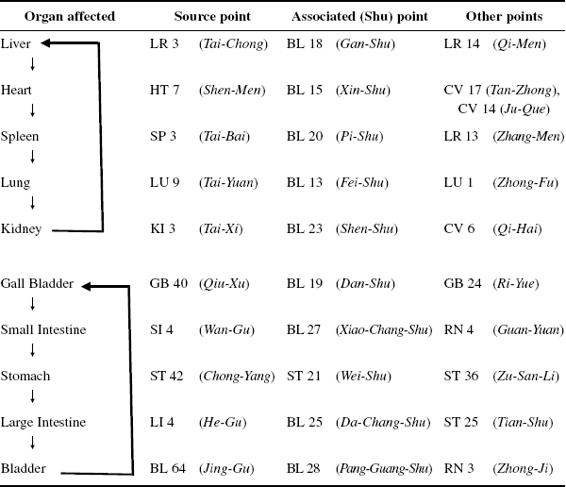
Sources: (1) Lade A, Acupuncture Points: Images and Functions, 6th edn., Eastland Press, Washington, 1996. (2) Zhu et al., Diagnostics in TCM. Textbook for University TCM Students, Shanghai Scientific and Technology Publishing House, Shanghai, China, 1998.
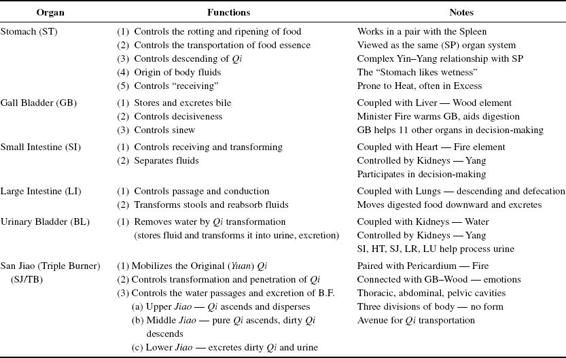
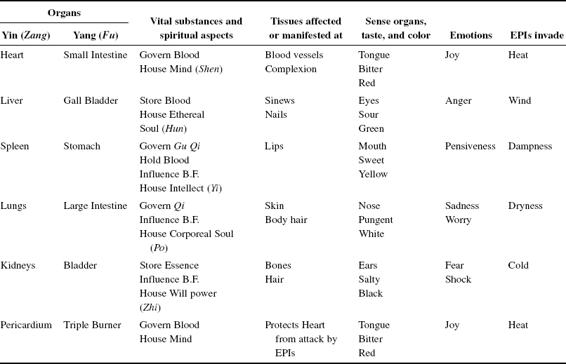
Introduction to internal pattern identification
The pattern and the disease are different. The pattern, often termed “syndrome,” is a summarization of the pathology of a given stage of disease and its associated specific clinical signs (objective findings) and symptoms (subjective complaints). It may reflect the location, nature, and severity of the disease, the condition of Qi, the “Upright vs. Evil” Qi interaction, and pathogenesis. Thus, a pattern is often time- and patient-dependent. Disease is a deviation from health, and summarization of the characteristics of the ENTIRE history (including prognosis) of the disharmony in the body is necessary.
There are many methods of syndrome differentiation, which vary clinically, each having its own features. However, to determine the precise location and nature of a disease and how to treat it with medicinal herbs and acupuncture points, it is imperative to capably differentiate syndromes according to the theory of the Zang–Fu organs. For example, syndromes of Yin deficiency can be deficiency of Heart-Yin, Lung-Yin, Liver-Yin, Kidney-Yin, or Stomach-Yin. Thus, knowing the specific organ of Yin deficiency will allow a proper treatment targeting the specific organ(s) involved to ensure better treatment outcomes. In another case, while syndrome differentiation by meridians and the four stages is useful, the pathological changes are, at their core, related to the disturbance of the Zang–Fu organs and their Yin and Yang, Qi, and Blood aspects. Therefore, it is never too much to emphasize the importance of pattern identification by internal organs.
Identification of internal organ patterns is used mostly for interior and chronic conditions.
Identification of patterns by the eight principles is a basic step in organ pattern identification.
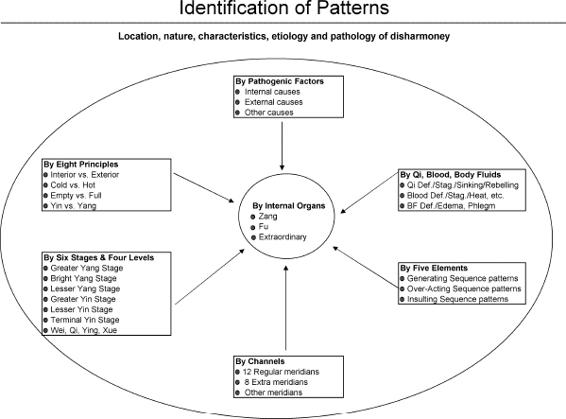
The general model of an organ pattern
While the cause(s), pathology, and clinical manifestations of each internal organ pattern may differ, all internal organ patterns may have a root cause(s) of the disharmony, a given underlying pathogenesis, and associated clinical patterns (Empty, Full, Mixed/Combined).
A general model of the development of an organ pattern is illustrated in.
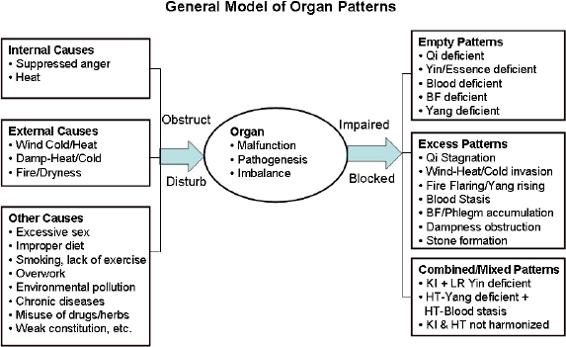
Etiology, pathology, and diagnosis of internal organ patterns
Treating the root of the problems is the soul of TCM. Thus, it is important to determine the cause(s) of a disharmony, the pathology and pathogenesis, and related clinical manifestations before one can make a diagnosis of the specific internal organ pattern(s).
In addition, Microsystem diagnoses (of the ears, hands, face, and feet) are useful tools in assisting syndrome diagnosis of internal organ patterns.
Steps and considerations in organ pattern identification
